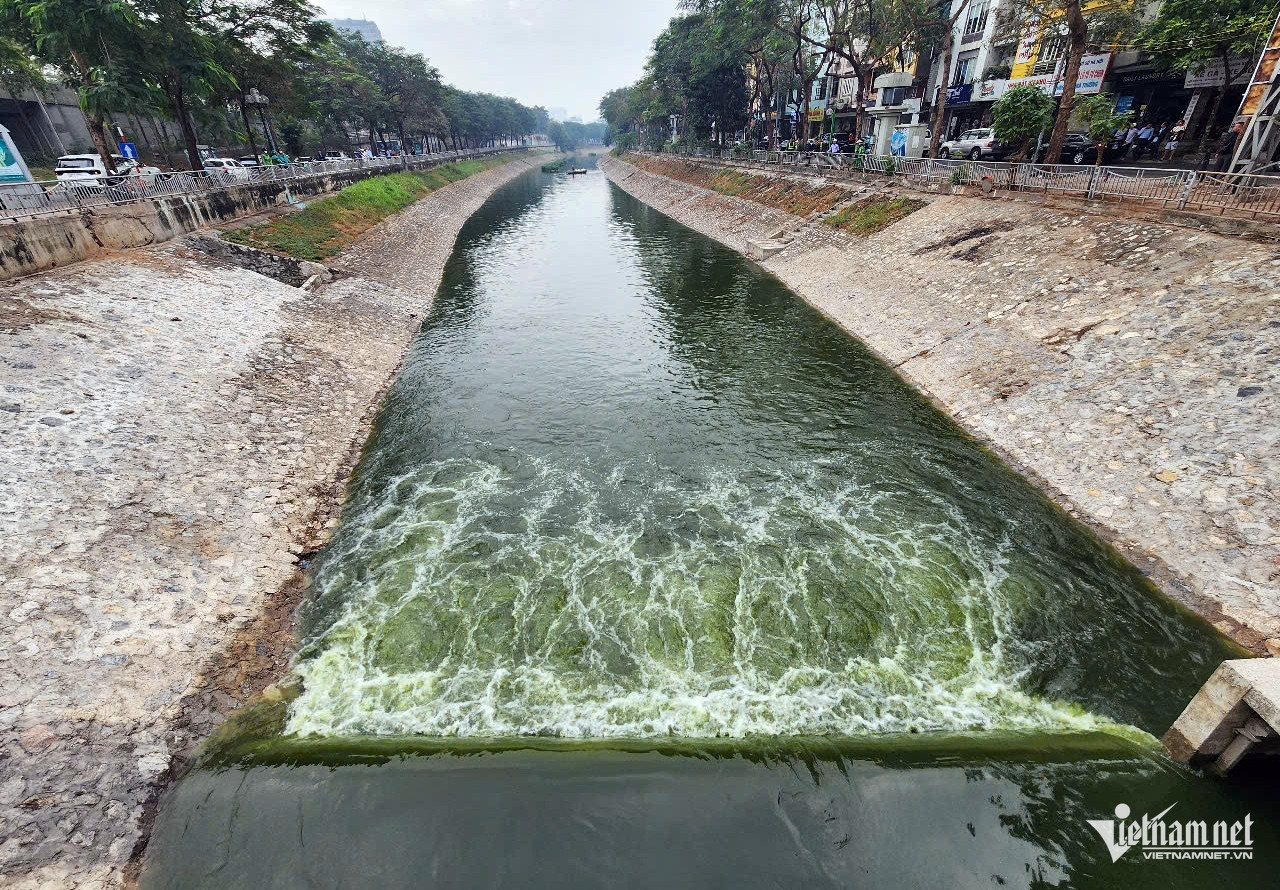
Hanoi's People's Committee Chairman, Tran Sy Thanh, has proposed an emergency project to divert water from the Red River to replenish the To Lich River, with a projected investment of approximately 550 billion VND ($22.4 million).
In a report to the Prime Minister, Chairman Thanh emphasized the severe pollution of the To Lich River, which negatively impacts the health and quality of life of residents living along its banks and diminishes the city's aesthetic appeal.
The urgent need for action
The To Lich River is currently facing significant environmental degradation.
Past efforts, such as Hanoi's Phase 1 and Phase 2 drainage projects and the ongoing Yen Xa wastewater treatment plant initiative, have aimed to improve urban water management.
The Yen Xa plant, which partially began operations on December 1, 2024, is expected to fully integrate its systems by 2027.
However, once the plant becomes fully operational, the water sources currently feeding the To Lich River will be redirected, potentially leaving the river dry.
Hanoi forecasts that until the 2026–2030 period, water replenishment projects for both the To Lich and Nhue Rivers from the Red River will not be completed as outlined in the city's drainage master plan, approved by the Prime Minister with a vision to 2050.
Without immediate intervention, the To Lich River is expected to expose its muddy bottom during the dry season, worsening pollution and urban blight.
Proposed solution and implementation plan
The city is seeking approval for an emergency project to pump water from the Red River into the To Lich River to mitigate environmental impacts and improve urban aesthetics.
The proposed 550-billion-VND budget will come from Hanoi's municipal funds, with a commitment to complete the project by September 2025.
Although specific implementation details are not yet disclosed, experts suggest installing a pumping station on the Red River to channel water into the To Lich River via a system of pipes.
Pipes crossing dikes would be encased in reinforced concrete box culverts to ensure structural safety.
Water would be routed along Vo Chi Cong Road to the To Lich River's origin at Nghia Do Canal (near Hoang Quoc Viet Street), where a sedimentation basin could be constructed to reduce sediment levels in the water before discharge.
Current state of the To Lich River
The 13.4-kilometer-long To Lich River starts at Nghia Do Canal and flows into the Nhue River via the Thanh Liet sluice gate.
Alternatively, it drains into the Red River through the lower Kim Nguu River and the Yen So Pumping Station, which has a capacity of 90 cubic meters per second.
Despite ongoing improvements, the river remains polluted due to untreated wastewater discharge.
Of the 119 sewer outlets along its banks, 87 have been connected to the Yen Xa wastewater treatment plant system.
However, 32 outlets between Hoang Quoc Viet Street and Lang Ha Road are still discharging untreated water, as they are part of other projects yet to be integrated.
Given these challenges, Hanoi underscores the necessity of an emergency water replenishment project to address immediate environmental concerns.
Quang Phong